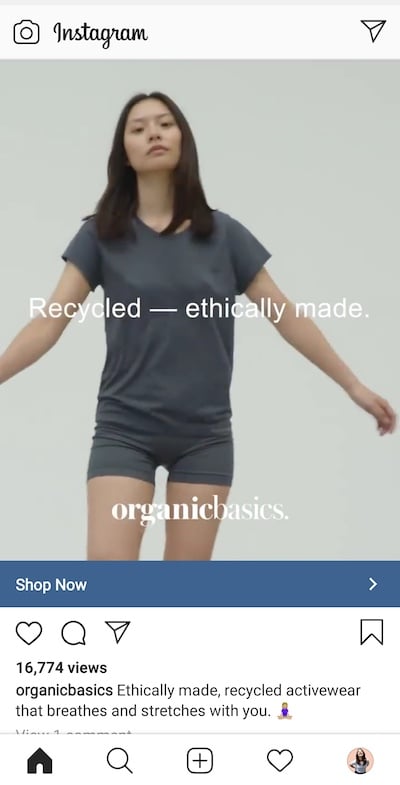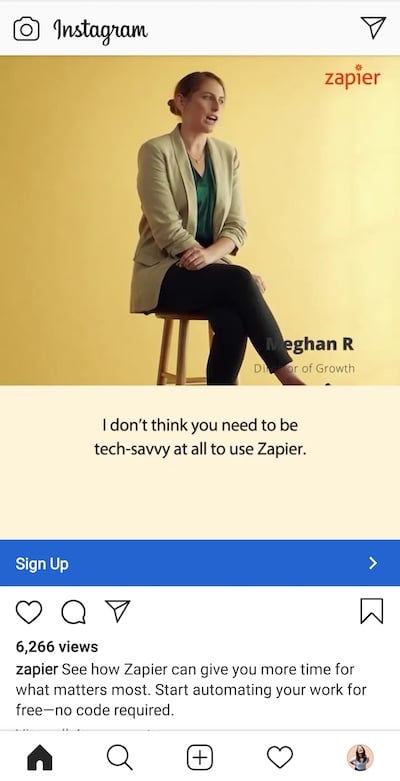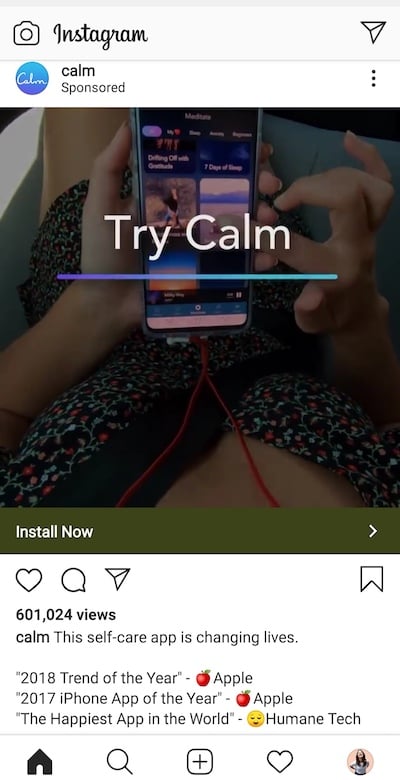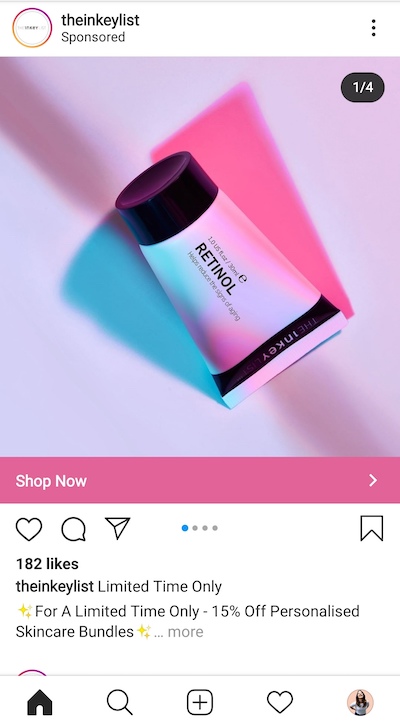Instagram ads appear in users’ feeds. The ads look like a regular post but with a sponsored label and a colored call-to-action button.
Images drive Instagram. Thus the visual should rule your ad. Choose a static image, carousel (multiple) images, or video. The choice depends on your budget and goal and your ability to meet image and video specifications. Once that’s covered, you’ll want catchy ad captions to accompany your visual.
What follows are nine tips for high-converting Instagram ads.
High-converting Instagram Ads
Understand the persona of your target buyer. This will help with composing the ad text. Both the voice and content revolve around what this “persona” likes to read, know, and see. For example, is she serious, fun, detailed, or price-driven? Each would shape your ad copy.
Know your goal. Do you want more signups for your newsletter? Brand awareness? Store traffic? Engagement? The purpose should shape your entire ad concept and, importantly, your call-to-action.
Use short and punchy text. The copywriting techniques that you use for everyday Instagram captions are suitable for ads, as well. A big difference, however, is text length. I typically prefer longer captions on a traditional Instagram post. But users can easily overlook ads since they’re not typically from a “friend” or “follower.” Thus, catch their attention with concise and intriguing copy, preferably under 200 characters.
Entice prospects with “free.” The example below from My Raw Joy, a maker of vegan snacks, focuses on free shipping. The short text leads with the unique selling point — an organic cookie with “clean” ingredients — and ends with free shipping. It fits the goal of driving sales and the “Shop Now” call-to-action.

This ad from My Raw Joy focuses on free shipping, which fits the goal of driving sales.
—
State features and benefits. The ad below from Organic Basics, an apparel company, leads with features (“organically made,” “recycled”), and ends with benefits (“breathes,” “stretches”). It’s all in one quick sentence.

The primary features and benefits of Organic Basics’ apparel are contained in one sentence.
—
Focus on one item. Users who are familiar with your brand are likely aware of its purpose and benefits. For those prospects, promoting a single item can drive sales.
The example below from apparel manufacturer “& Other Stories” deploys a shoppable carousel ad. Users can scroll to the left and see three photos of the Belted Quilted Coat. The ad text starts with “Fall foundations,” which is timely, and includes a short product description, “…made from recycled polyester.”

This shoppable carousel ad from & Other Stories includes a seasonal connection (“Fall foundations”) and a short product description (“…made from recycled polyester…”).
—
Use a call-to-value. Most Instagram users are not there to shop for expensive or complicated products. Thus promoting a technology service such as Zapier, an integrator of web apps, can be challenging. That’s why the goal of the ad below is to learn more about the product, not buy it. The caption reads, “See how Zapier can give you more time… .” It’s a call-to-value rather than a call-to-action. It asks the audience to find out how the product will provide them real (currently free) value — not to buy it.

The caption of “See how Zapier can give you more time…” is a call-to-value rather than a call-to-action.
—
Use social proof. Social proof is when a third party proves your point. The example below from Calm, a meditation and sleep app, states that the product changes lives. That’s a bold claim. But the company backs it up with accolades from Apple and Humane Tech, two reputable sources.

Social proof is when a third party proves your point. This ad from Calm provides social proof with accolades from Apple and Humane Tech, two reputable sources.
—
Use urgency and discounts. If your goal is more sales, try promoting products with price reductions. The ad below from The Inkey List, a provider of skincare products, combines a 15-percent discount with urgency (“Limited Time Only”). Both tactics require little creative effort and generally work for every ecommerce niche, in my experience.

The Inkey List combines a 15-percent discount with urgency (“Limited Time Only”).
—
How to Start
Instagram ads are a wonderful way to reach targeted prospects. To start, take a few posts from your account’s feed that receive a lot of engagement and turn them into ads. Experiment with tactics, goals, and copy. Review your Instagram Insights to see which were the most successful. Then scale with fresh images and text.





